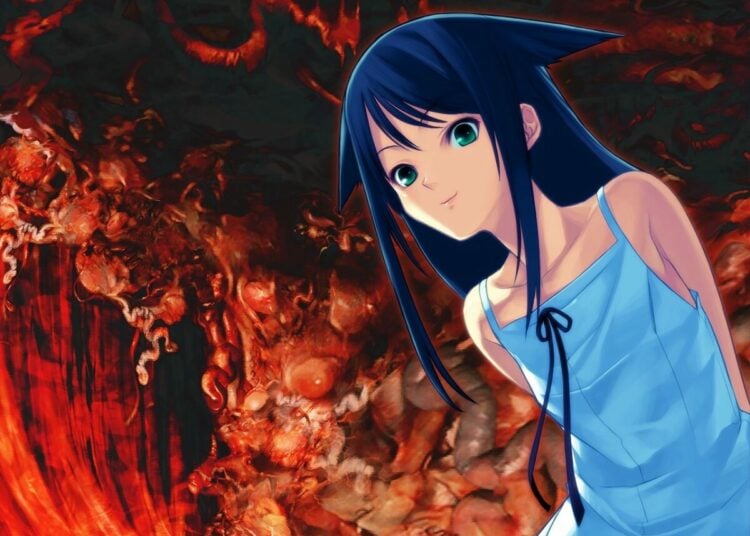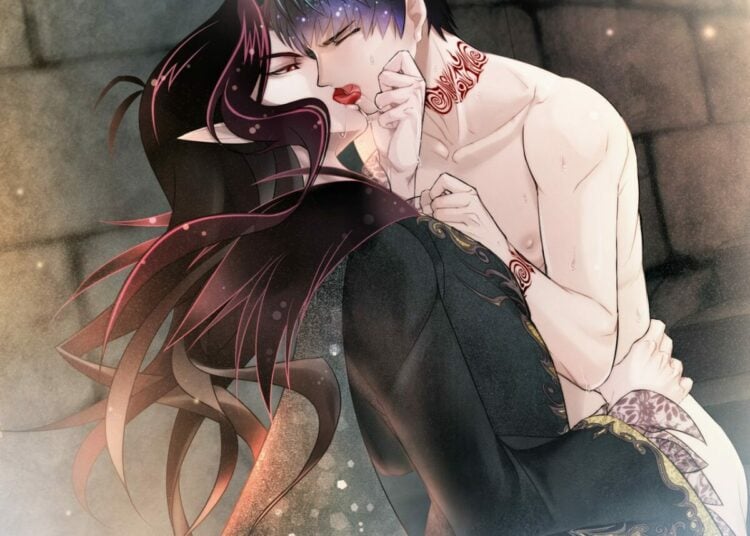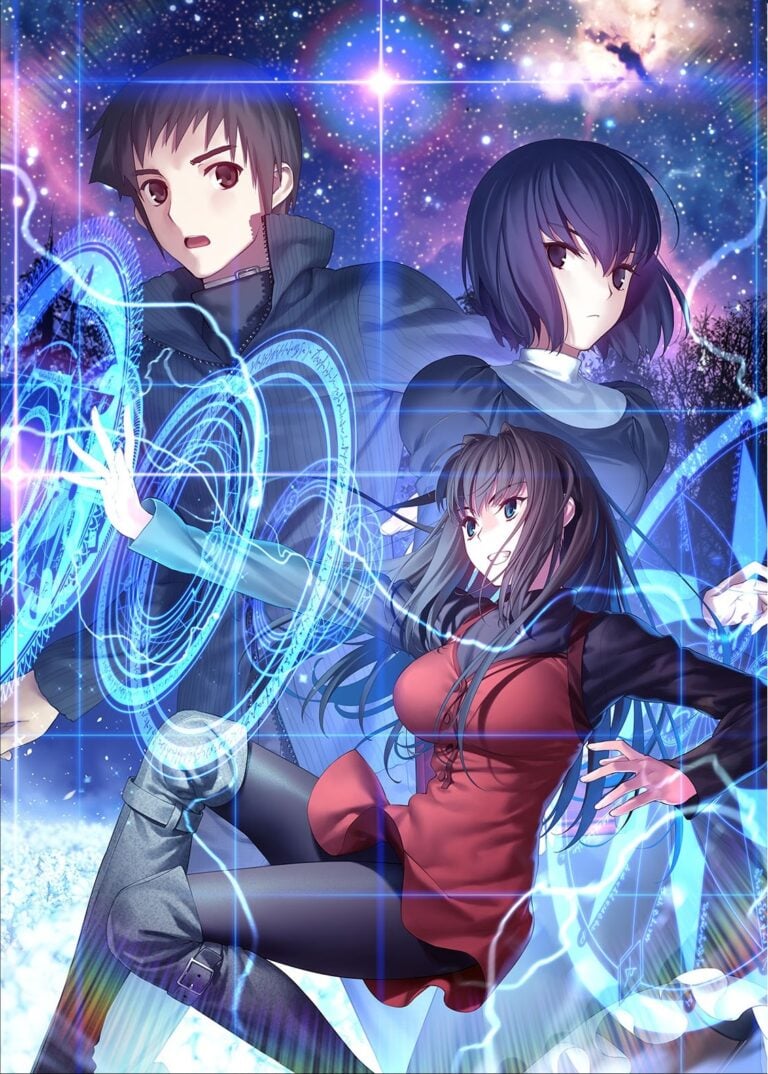Disclaimer: The subject of this piece contains graphic depictions of violence, sexual assault, cannibalism, and suicide. This article will mention some of those events. I firmly believe these elements add to the story. However, more squeamish and easily distressed readers may want to click away.
Have you ever felt lost and alienated in a world you know, to the point you don’t even recognize those you once loved? Have you ever been desperate for someone who understands you when you feel increasingly isolated? Would you give up all of life as you know it for that connection? These questions lie at the heart of Gen Urobuchi’s (Fate/Zero, Madoka Magica) most famous early work, Saya no Uta: The Song of Saya. It would be a disservice to say the visual novel is intense. In its short 4-6 hours of reading, you’ll see sexual assaults, murder, betrayal, and cosmic horrors beyond mortal comprehension.
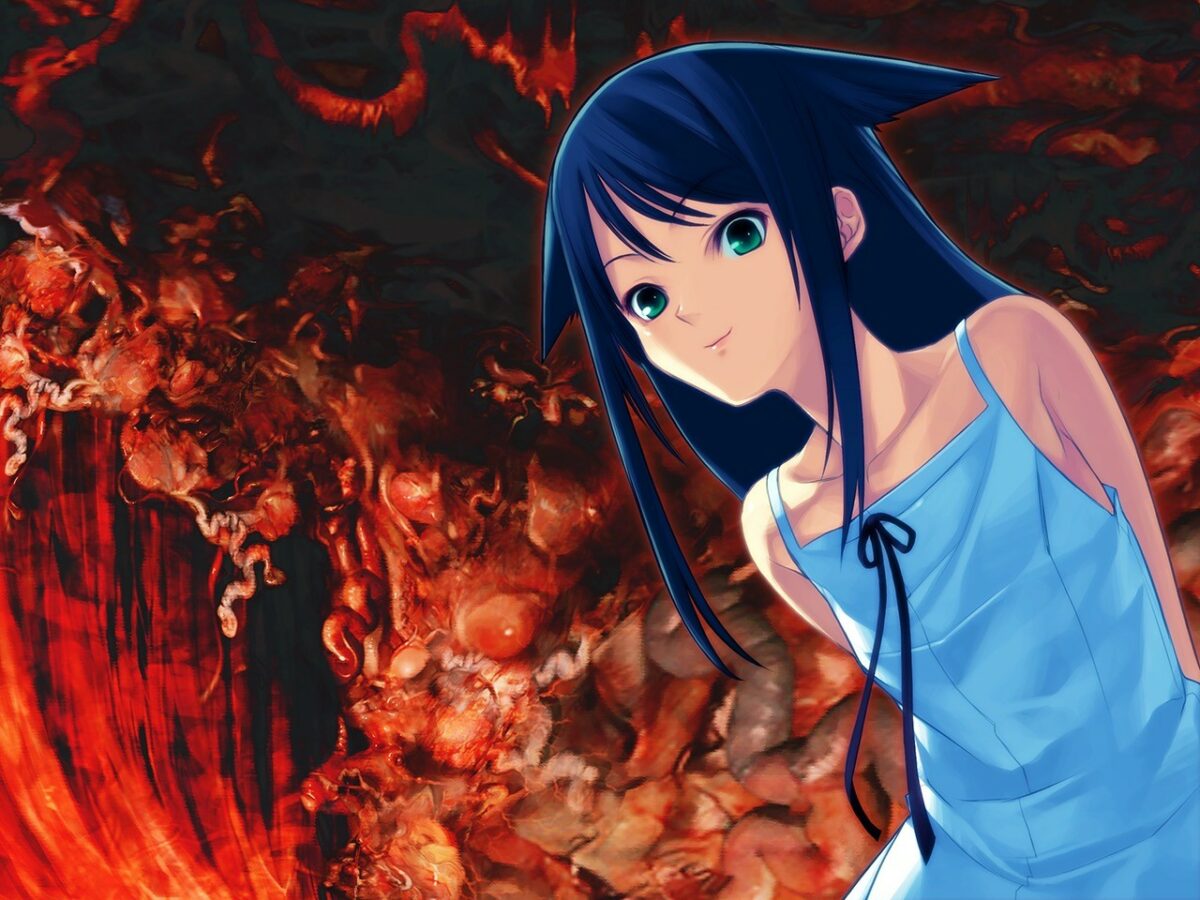
And yet, Saya no Uta is my favorite piece of fiction across any medium. I dare say it even helped me improve my life in some small ways. It is a haunting piece of fiction, even without the distressing content I listed above. The questions it raises are poignant. A surface-level understanding of the work leaves you with cosmic horror. Peeling back the layers and revealing the dark, pulsating mass underneath will see you examining yourself, your relationships, and possibly your own philosophies. It did the same for me, and I’m grateful for it.
A Peek into the Unknown
I read through Saya no Uta every few years. Strangely, it’s comforting. Despite the extraordinarily horrific content, I always find myself immersed in the tale. I’ll start a new file, and the next thing you know, I’ve read through it in a weekend, wondering where the time went. So what’s it all about? Our story begins with Sakisaka Fuminori being assaulted in all senses by otherworldly beasts. The music is chaotic, with a wall of sound that drills into your ears. The creatures, are they speaking? We can almost hear some words between the guttural, grating noises. Fuminori’s patience runs out, and he flees, telling himself, “I’m not crazy.”
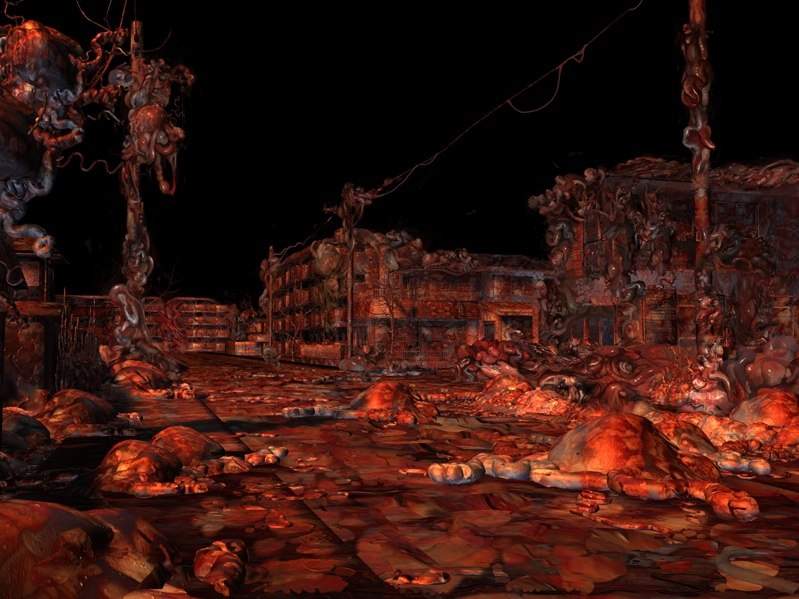
Perspectives shift, and then we see this scene for what it really is: friends discussing travel plans over coffee. So what was that we witnessed? Well, Fuminori, our protagonist, suffered an accident that forced him to get experimental brain surgery to save his life. His senses are now warped. Gone are the vibrant colors of the world. In their place? Tumorous flesh walls, blood-covered roads, a black void for a sky, putrid scents, and a cacophony of noise. It’s no exaggeration to call this a living hell. During his time in the hospital, Fuminori met our titular Saya. She’s the only thing that looks like it belongs in the world he left behind. She’s normal. Frail. Beautiful. Innocent. A young girl in a pure white outfit with a sweet voice and a soft touch. She’s his only respite in a world gone mad, and the relationship they form will change the two of them forever. If any of this interests you, give it a read. It’s available on Steam or JAST USA’s website and is a relatively short read.
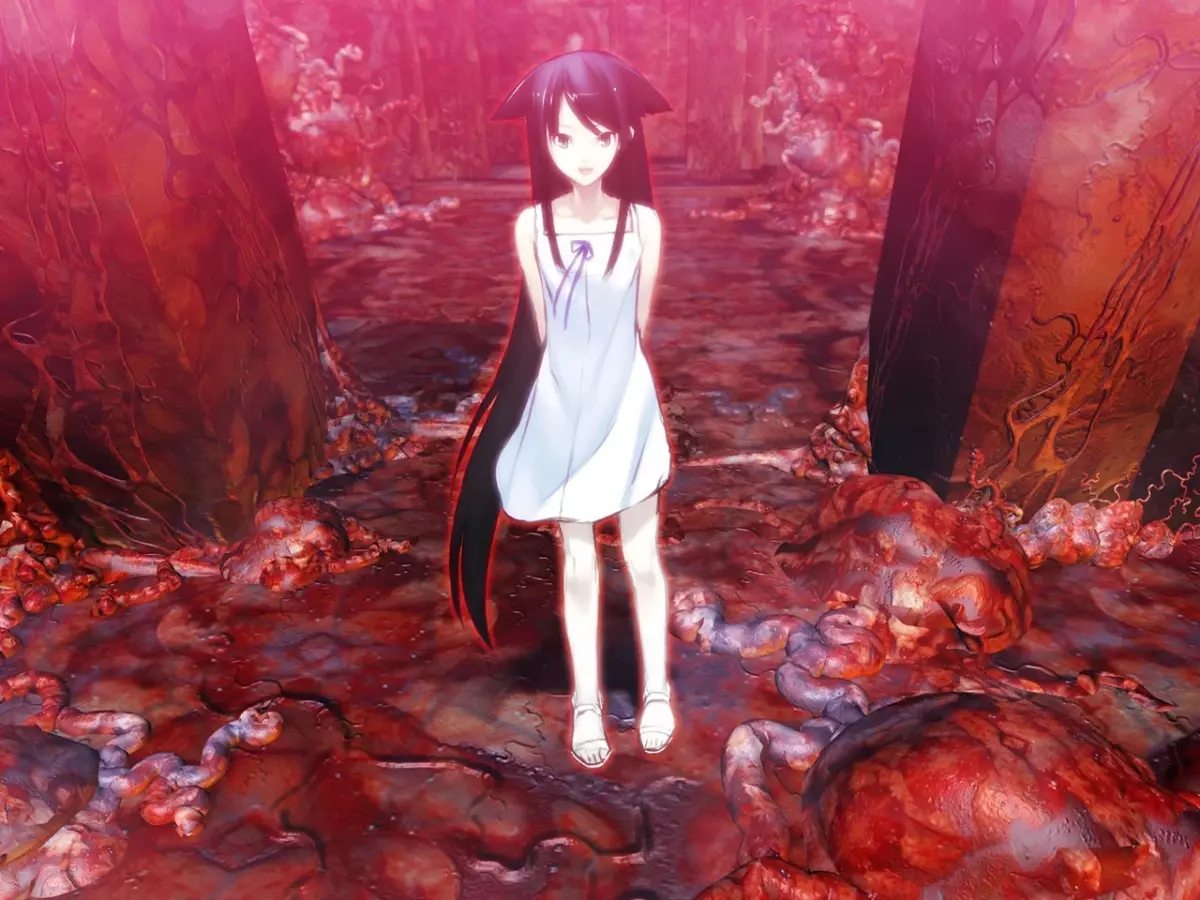
The History of Saya
Released the day after Christmas in 2003, Saya no Uta is one of the earliest titles developed by Nitroplus. In a developer commentary for the game, Urobuchi states that when writing the story, he was battling depression and feeling isolated from his world. Though not the reason for his struggles, he recalls feeling disillusioned with horror at the time: After all, he spent his teenage years immersed in Stephen King and Lovecraft. The sting of horror felt long gone to him. So, to rekindle that connection, he stood by the mantra of “When in doubt, just write.” Unsure of himself and his ability to capture the feeling of horror, he sat at his desk and wrote what would become the visual novel medium’s most notorious title.
Spoiler: he still had it. Saya no Uta is still resonating and shocks readers two decades later. Eventually, it would get an English fan translation in 2009, and that’s when the title’s popularity would truly take off. It was later picked up by our sister company, JAST USA, for a full official release in 2013, cementing its place in the budding expansion of the international VN market. But I skipped over one… odd piece of the title’s history. You see, dear reader, between the fan translation and the official release, there was an American comic book adaptation of Saya no Uta published by IDW. No, I’m not kidding, and yes, it was an awful adaptation. Years before Netflix ruined our favorite Japanese media, it was unleashed upon the world. Below is one of the covers.
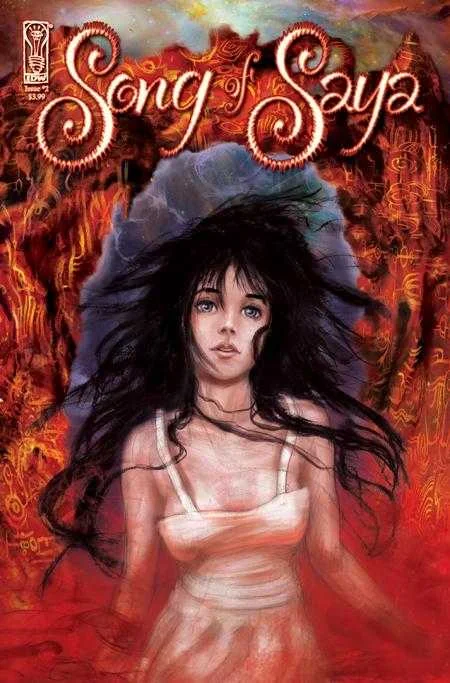
Weirdly enough, the art is actually good. It’s dark and disturbing where it needs to be, though not to the original’s level. Everything else? It may as well be a different story. Fumin… sorry, I mean… Josh is not saddled with a permanent condition like his VN counterpart. Saya is now a government experiment, then they ruin her mystique at the end of the first issue. There are alternate dimensions, conspiracies, and numerous sci-fi horror tropes. It’s mercifully short at only three books. But I honestly think that if it were just named something else and severed its few small ties to our beloved Japanese Saya, it’d be better for it. Not by much, mind you.
The Madoka Bump and the What-Ifs
Following the smash success of Madoka Magica, curious fans began to look into Urobuchi’s previous works, chief among them being Saya no Uta. By Nitroplus’s own admission, this pushed sales of Saya to flare up, rivaling the sales of a brand-new release. This included Western fans getting their hands on the fan translation. Around this time, it began hitting the “Top Ten Most Messed Up Visual Novels” lists. When it finally launched officially in the West via JAST USA, it became a topic of debate that still burns to this day: how far is “too far”? Even the latest reviews of the much tamer Steam version show that several players can’t get past the bleak tone and grotesque nature. And that’s fine. Everyone is entitled to their opinions. What surprised me is that I still see skeptics and those outside the VN community come away with warm views. That’s the mark of a great work of art.
With this newfound popularity, some desired to bring Saya no Uta to the big screen via Hollywood. That never happened, but there were talks with Sav! The World Productions in 2017 to develop a film and, allegedly, work had been going on for some time. The last news we heard about it was during an interview that same year. My speculation is it was quietly canceled, given they were worried about fan reception, so it may be for the best. Aside from these odd little footnotes, Saya has enjoyed the occasional spot in the limelight. A stunning figure was released in 2017 and again in 2020 by Good Smile Company. And Saya found herself in the crossover fighter Nitroplus Blasterz, which we’ve looked at before.
In the next part, I want to examine the story of Saya no Uta in detail, plus the themes and allegories in the storyline, including one I see most people gloss over. Let me repeat, if you have even the slightest interest, please try it out. We currently sell the digital edition for $25, uncensored.


